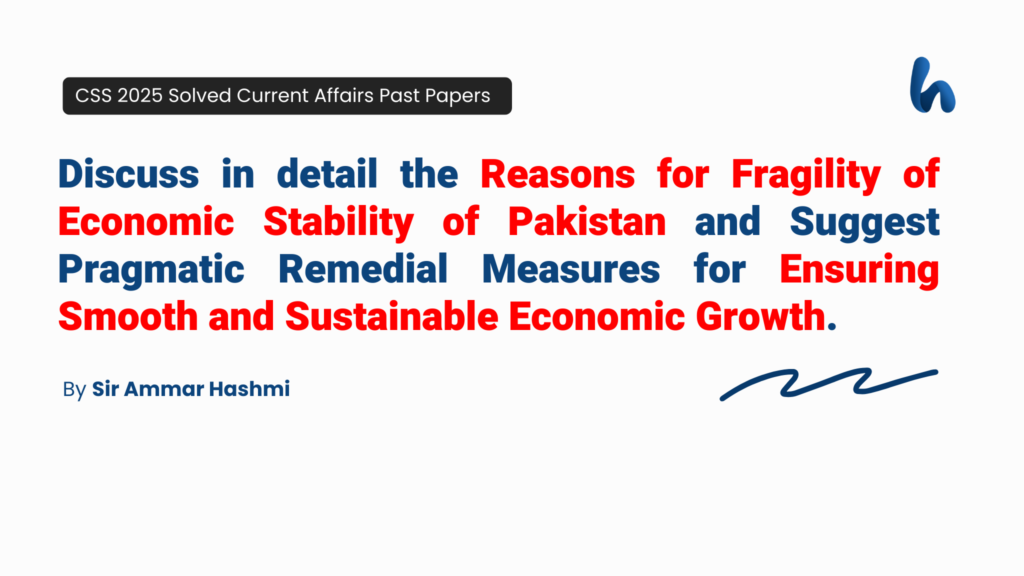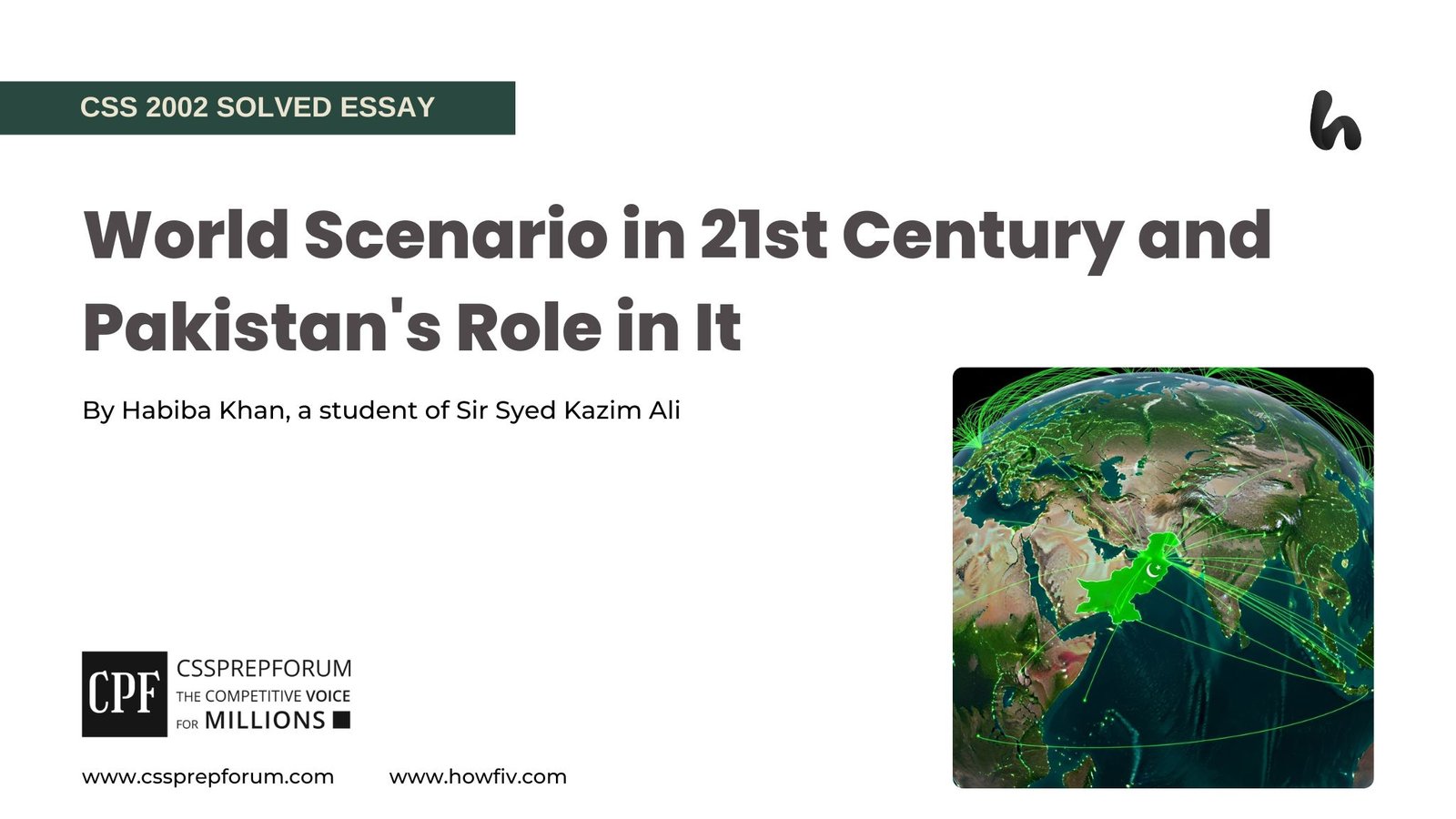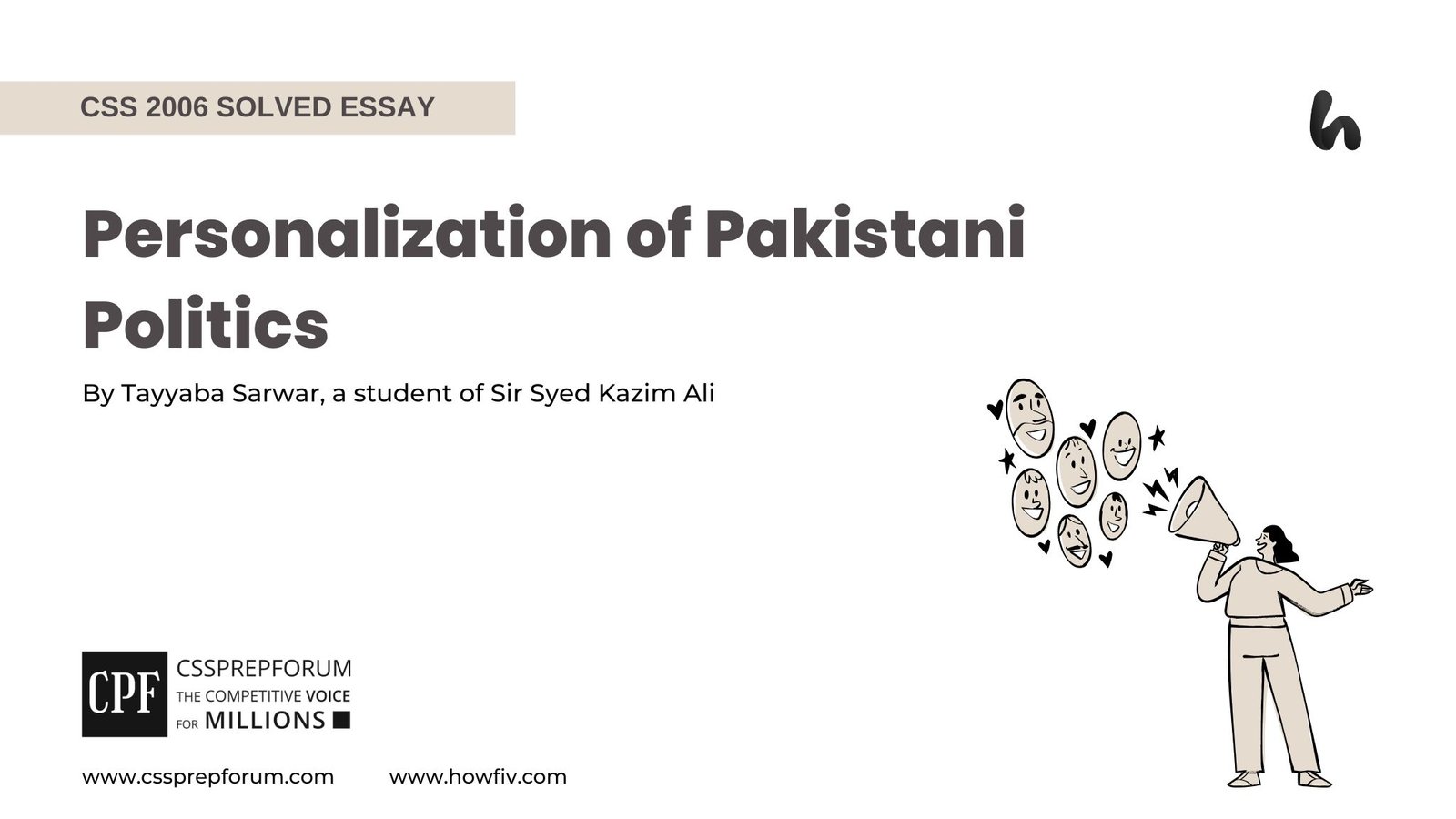CSS 2025 Solved Current Affairs Past Papers | Fragility and Remedial Measures of Economic Stability of Pakistan
The following question of CSS Current Affairs 2025 is solved by Sir Ammar Hashmi, the best Current Affairs Coach, on the guided pattern of Sir Syed Kazim Ali, which he taught to his students, scoring the highest marks in compulsory subjects for years. This solved past paper question is uploaded to help aspirants understand how to crack a topic or question, how to write relevantly, what coherence is, and how to include and connect ideas, opinions, and suggestions to score the maximum.

Question Breakdown
This question has two main parts: The first one requires Reasons for the Fragility of the Economic Stability of Pakistan, and the second one requires suggesting Pragmatic Remedial Measures for Ensuring Smooth and Sustainable Economic Growth.
Outline
1-Introduction
2-A bird’s eye view of the current condition of economic parameters of Pakistan
3-Reasons for the fragility of economic stability of Pakistan
- ✓Debt-producing public sector
- ✓Unsustainable debt servicing
- ✓Brain drain and less support for entrepreneurship
- ✓Abysmal tax collection and a wide range of untaxed sectors
- ✓Widened capacity payments to IPPs
4-Pragmatic remedial measures for ensuring smooth and sustainable economic growth
- ✓Privatization of debt-producing SOEs and Boosting Investor Confidence
- ✓Seeking debt restructuring with sustainable paying options
- ✓Provision of adequate support to young entrepreneurs for import substitution and export competitiveness
- ✓Enhancing direct taxation, reducing indirect taxation, and devolution of tax collection to the third tier of government
- ✓Investing in renewable energy and completing all the looming energy-sharing projects at the regional level
5-Critical analysis
6-Conclusion

Answer to the question
Introduction
In recent times, Pakistan has faced a severe economic downturn due to the fragility of its economic stability, with the economy always in boom and bust cycles. Among the reasons for its economic fragility, the major ones are the debt-producing public sector, abysmal tax collection with a wide range of untaxed or undertaxed sectors, widened capacity payments to IPPs, and unsustainable debt servicing. These reasons resulted in the form of low foreign reserves, a depreciating currency, and exponentially high inflation. Thus, there is an urgent need to address these vital economic aspects and stabilize the deteriorating economic conditions through various significant measures. These measures include the privatization of debt-producing SOEs, devolution of tax collection to the third tier of government, enhancing direct taxation and reducing indirect taxation, and making exports competitive are other measures that are inevitable for ensuring smooth and sustainable economic growth.
A bird’s eye view of the current condition of economic parameters of Pakistan
Pakistan has been facing an extreme economic downturn since mid-2022, mainly attributed to rampant currency devaluation of more than 30%, leading to severe inflation of about 40%. Also, the unchecked subsidies, as well as unregulated imports, have resulted in depleting the much-needed foreign exchange reserves that dropped to an abysmal low of less than 3 billion USD, covering only 3 weeks of imports. Gradually, the economic parameters have started showing a bit of recovery towards betterment, which is mainly driven by the IMF support package.
Reasons for the fragility of the economic stability of Pakistan
The following are some of the primary reasons for Pakistan’s fragility in terms of economic stability.
- Debt-producing public sector
The first and foremost reason behind the fragility of Pakistan’s economic stability is the burden of debt-producing the public sector. According to the World Bank report on State-owned enterprises (SOEs), Pakistan’s public sector is among the top worst performing SOEs, and alone, PIA has accumulated a debt of more than Rs. 800 billion. Thus, continuous injection of funds through subsidies is getting burned due to poor managerial practices, and the public sector (PIA, WAPDA, etc.) is gathering even more debt, which is a direct burden on the already precarious economy of Pakistan.
- Unsustainable debt servicing
Second, Pakistan’s debt servicing has reached the limits of unsustainability, as almost 55% of the current financial year’s budget will go directly into servicing the debt payments. Thus, this leaves little for the country to spend on development and other aspects, and it has become a primary reason behind the fragility of Pakistan’s economic stability.
- Brain drain and less support for entrepreneurship
Third, excessive brain drain in the past few years amid a scarcity of jobs and less support for entrepreneurship in the country has become a significant reason behind the fragility of Pakistan’s economic stability. According to a PIDE report, nearly one million young individuals have left the country for better opportunities abroad. This report highlights the precarious condition of support for entrepreneurship in the country. Due to this, the country is dependent on imported goods, and no work is done on import substitution, thus leading to the fragility of Pakistan’s economic stability.
- Abysmal tax collection and a wide range of untaxed sectors
Fourth, Pakistan’s economy has abysmal tax collection and a wide range of untaxed and undertaxed sectors. According to the Asian Development Bank’s report, Pakistan’s tax-to-GDP ratio is one of the lowest globally, at 9%. This abysmal tax collection alone is enough to state the condition of Pakistan’s economy. Moreover, various sectors, like traders, are still out of the tax net, causing a significant revenue loss. According to a PIDE survey, there are more than 2 million commercial outlets in Pakistan and only 30,000 pay tax. Further, taxes on various sectors like agriculture and real estate are close to none. Thus, these taxation issues are a significant reason for Pakistan’s fragility in terms of economic stability.
- Widened capacity payments to IPPs
Last, the capacity payments to IPPs have also jacked up to unsustainable levels. According to their agreements, they will be paid a significant amount even if no electricity is purchased, and the payment will be made in dollars, which are already scarce in Pakistan. These payments burden the national exchequer and serve as a significant reason for Pakistan’s economic stability’s fragility.
Pragmatic remedial measures for ensuring smooth and sustainable economic growth
There are a lot of measures that can be taken to ensure smooth and sustainable economic growth in Pakistan. Some of these are as follows.
- Privatization of debt-producing SOEs and Boosting Investor Confidence
First, the state should prioritize the privatization of debt-producing SOEs. Various SOEs are continuously jacking losses due to poor or corrupt managerial practices. These SOEs are just a burden on the state’s already limited direct taxpayers. Doing so will not only reduce the burden of continuous debt accumulation but will also boost investor confidence as the economy will be seen opening up and away from government control, which will result in attracting much-needed FDI. This will ultimately ensure smooth and sustainable economic growth in Pakistan.
- Seeking debt restructuring with sustainable paying options
Second, Pakistan is facing a severe economic downturn as almost 55% of its fiscal year budget directly goes into debt servicing. And it’s not the end; it is growing more and more with every passing year. Thus, the state should urgently address this looming disaster by seeking debt restructuring with sustainable paying options for a breathing fiscal space. Hence, it will prevent further economic downturns and ensure smooth and sustainable economic growth in Pakistan.
- Provision of adequate support to young entrepreneurs for import substitution and export competitiveness
Third, the incumbent government should seriously focus on providing adequate support to young entrepreneurs for import substitution and export competitiveness. The state should introduce easy loan schemes and easy business registration mechanisms to help young individuals establish businesses. However, in doing so, the state should provide funding and easy loans to those individuals who want to work in export-oriented businesses and startups, which can lead to import substitution. Moreover, the state should encourage the exporter of various goods across industries to make their exports competitive rather than relying on preferred export status, aka GSP plus status. This can be done by making the products’ quality or price competitive. Also, to successfully execute this, a policy continuity will be required that will be de-hyphenated from politics; thus, any government change will not affect it. Hence, it will ensure smooth and sustainable economic growth in Pakistan.
- Enhancing direct taxation, reducing indirect taxation, and devolution of tax collection to the third tier of government
Fourth, the state should consider devoting tax collection to the third tier of government. By doing so, the efficiency of tax collection will be enhanced as the area of influence and collection will be small, and almost no one will be able to evade the taxation mechanism. However, the main difficulty is its implementation and the will of the policymakers to implement this devolution. The devolution of tax collection is a prerequisite to enhance direct taxation and reduce the burden of indirect taxation from the masses. Once the direct tax collection, which currently stands at a mere 9%, surpasses indirect taxation, it will have a domino effect on inflation in the country. Once done, this can ensure smooth and sustainable economic growth in Pakistan.
- Investing in renewable energy and completing all the looming energy-sharing projects at the regional level
Last, Pakistan should seriously consider renewable energy projects to reduce the burden of capacity payments and imported energy products, as the country has a high availability of renewable resources like solar and wind. Moreover, the state should work on the swift completion of all the looming energy projects at the national level, like the Diamer-Basha dam and Suki Kinari project, as well as energy-sharing projects at the regional level, like CASA-1000, Iran-Pakistan gas pipeline, etc. By doing so, the state can safeguard the energy supplies at low cost and help navigate the expensive power agreements. Thus, it will ensure smooth and sustainable economic growth in Pakistan.
Critical analysis
Critically, Pakistan needs these as well as many other necessary reforms to overcome the growing monster of economic crunch. However, the success of these reforms is directly linked with the policy continuation and how the ruling elite responds to these reforms. If the state is serious about reforming the economic structure of the country to become independent in the true sense, then it must implement these reforms by avoiding any political aims to prosper by compromising sustainable growth. In this way, the state can ensure smooth and sustainable economic growth in Pakistan.
Conclusion
In conclusion, Pakistan has been facing an extreme economic downturn for the past years, mainly in the form of currency devaluation, excessive inflation, and extremely low foreign exchange reserves. The most significant reasons behind this are unsustainable debt and poor tax collection. But, still, all is not lost as through various significant reforms, the state can successfully overcome the menace of economic crisis. These include debt restructuring, devolution of tax collection mechanism, and transition to renewable energy projects. If taken seriously and urgently by sparing them of political meddling, these reforms can potentially turn the precarious economic situation upside down and ensure smooth and sustainable economic growth in Pakistan.

CSS Solved Past Papers’ Essays
Looking for the last ten years of CSS and PMS Solved Essays and want to know how Sir Kazim’s students write and score the highest marks in the essays’ papers? Then, click on the CSS Solved Essays to start reading them.
CSS Solved Essays
CSS Solved General Science & Ability Past Papers
Want to read the last ten years’ General Science & Ability Solved Past Papers to learn how to attempt them and to score high? Let’s click on the link below to read them all freely. All past papers have been solved by Pakistan’s top CSS GSA coach having the highest score of their students.
General Science & Ability Solved Past Papers












